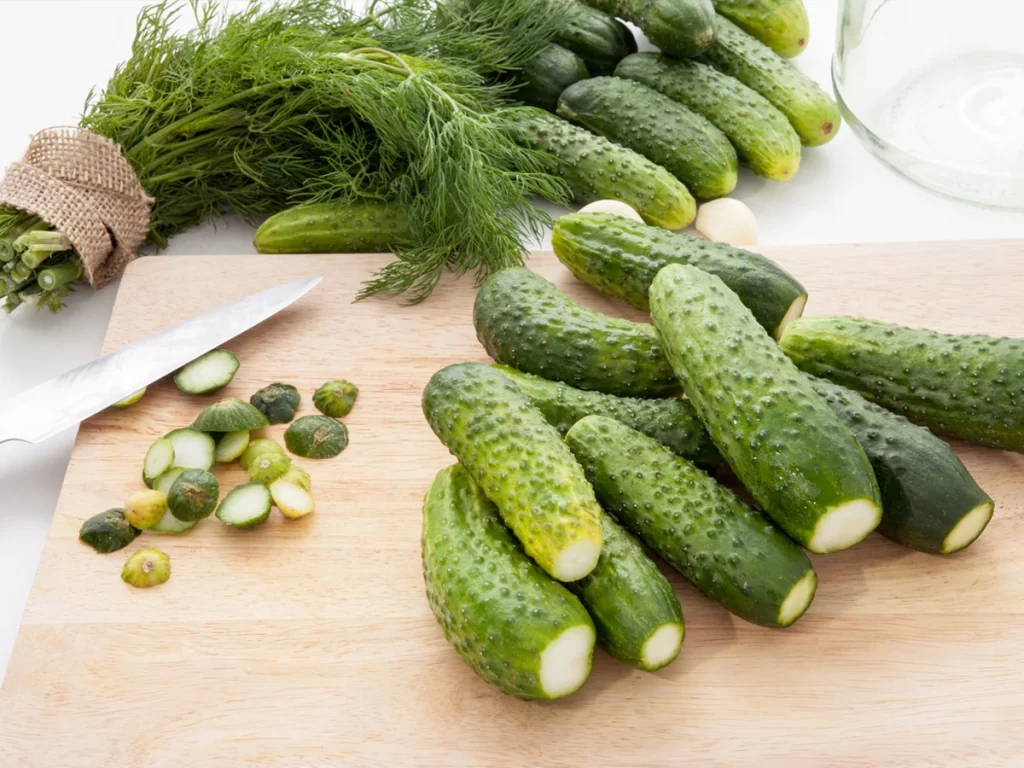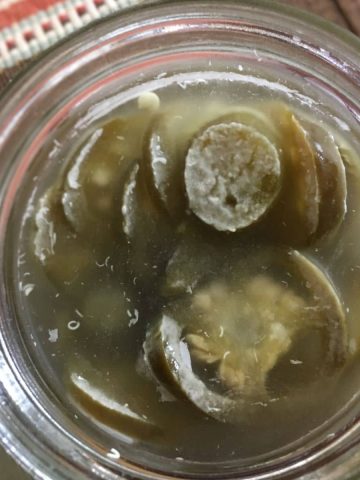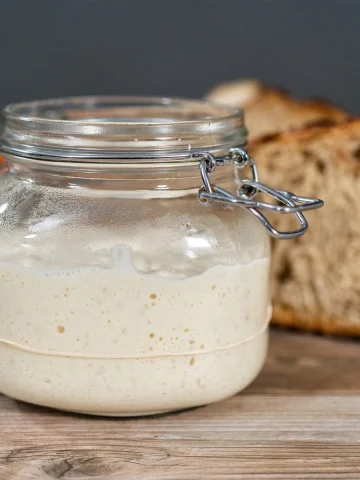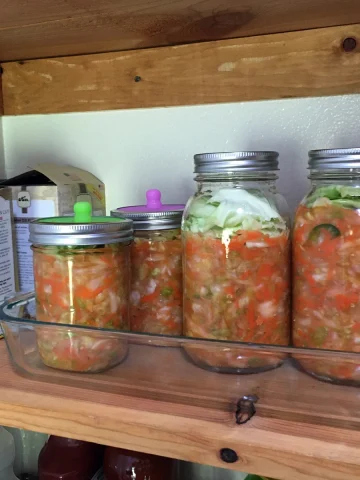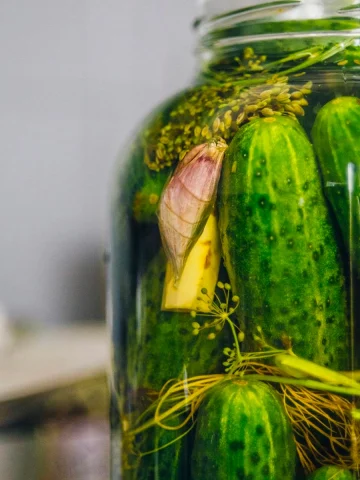Are your fermented pickles turning out mushy? Tannins are a great way to make crunchy Lacto-fermented dill pickles.
Grape leaves are full of tannins, which help make pickles crunchy. But sometimes, getting your hands on some grape leaves can be challenging.
Here are the 11 best substitutes for grape leaves. They are excellent sources of tannins for making Lacto-fermented pickles crunchy.
Jump to:
- Top Sources of Tannins for Crunchy Fermented Pickles
- 8 Bonus Tips For Making Crunchy Lacto-Fermented Pickles
- 1. Use a Saltier Brine
- 2. Use Small Whole Cucumbers
- 3. Use Fresh Cucumbers
- 4. Remove the Blossom End
- 5. Puncture the Skin
- 6. Chill Cucumbers in an Ice Bath
- 7. Ferment at the Coldest Temperature You Can
- 8. Pay Attention to the Color
- Recommended Crocks for Fermenting Pickles at Home
Top Sources of Tannins for Crunchy Fermented Pickles
- Black or Green Tea
- Bay Leaves
- Blackberry Leaves
- Indian Almond Leaves
- Cherry Leaves
- Sour Cherry Leaves
- Horseradish leaves or Horseradish root – grated or chopped
- Raspberry Leaves
- Mesquite Leaves
- Black Currant Leaves
- Oak Leaves contain the most tannins, so use a little less than other varieties.
Bay leaves are an easy-to-find grape leaf alternative. Add 2 – 4 bay leaves per quart to achieve the crunchiness you like.
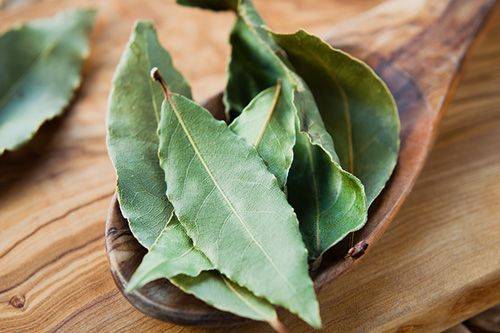
That's not all, and the following are a few more steps beyond just adding tannins to a recipe to help your fermented pickles get their crunch.
Related Topic: Naturally Fermented Pickles Recipe
8 Bonus Tips For Making Crunchy Lacto-Fermented Pickles
1. Use a Saltier Brine
The salt in the brine prevents harmful bacteria from growing. Then, the healthy lactic bacteria can produce lactic acid to preserve the cucumbers.
The healthiest choices are natural sea salt and Himalayan pink sea salt.
We recommend using a salt brine mixture of 4-5% instead of 2-3% or lower. This will bring out the taste and crunchiness.
My family prefers a 4% salt brine; it's not too salty and provides a satisfying crunch factor.
*A 4% salt brine converts to 2 tablespoons of salt for every 4 cups of water.
While a 5% salt brine is 2.5 tablespoons of salt for every 4 cups of water, this was a little too salty for my taste, but it could be perfect for you.
By using a higher percentage of salt brine, you will preserve the crispiness of the pickles. Beware, though, you don't want to overdo it because if they are too salty, you might end up throwing them out.
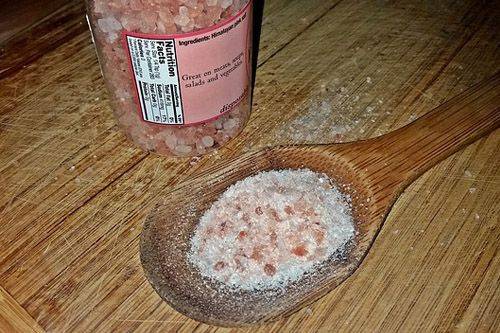
2. Use Small Whole Cucumbers
Small cucumbers tend to keep their crunch better than larger cucumbers. When buying cucumbers, choose the Persian cucumbers over Kirby's.
Kirby's are already quite crunchy and better suited for a quick pickling process. They don't hold up as well through the longer fermentation process. Traditional Kirby cucumbers get mushy on the outside during fermentation.
If you use larger cucumbers, do not cut them into small pieces because they tend to become soft.
It's best to choose a little cucumber and divide it into large spears. This will ensure the best-tasting pickles for your recipe.
3. Use Fresh Cucumbers
Fresh is best when it comes to fermenting pickles. If you notice your cucumbers are wilting, throw them out. Grocery stores always put the freshest produce in the back and the oldest in the front.
Fresh cucumbers have the most nutrients and health benefits, so take the time to find the best ones!
The cucumbers should have no soft spots and should not look wrinkly. If they have either, then they are on the way out.
Fresh picked cucumbers from your garden or the farmers' market work best. Using small Persian cucumbers makes the crispiest and crunchiest pickles.
4. Remove the Blossom End
The end of a cucumber contains enzymes that soften pickles. Cut a thin slice from the end to preserve the firm texture. This will keep the enzyme from softening the cucumber before it's fermented.
5. Puncture the Skin
Cucumbers harvested a bit late in the season or have been on the vine longer will develop a thicker skin.
A great way to improve their taste and texture is to prick a hole in each cucumber with a knife or skew. This will allow the brine to penetrate faster, and the cucumbers will culture better.
6. Chill Cucumbers in an Ice Bath
Chilling cucumbers in an ice bath for four to five hours before starting to process them will help improve the crispiness of the pickle.
Use a large, food-safe container and fill it halfway with ice before pouring in water. Replace the ice as needed to keep the cucumbers cool.
7. Ferment at the Coldest Temperature You Can
The ideal temperature for fermenting pickles is between 60-70°. Anything much warmer than that will result in mushy pickles. Stay in this range for the best results.
However, if the temperature is over 70 degrees, then shorten the fermentation time. Do a taste test after three days to determine their level of crunch. They are ready if they taste great and have the crunch you desire.
8. Pay Attention to the Color
The color of the cucumber is another indication of readiness. The batch is ready to eat when the cucumber changes from bright green to an olive or yellow-green color and the inside is translucent.
Are you wondering which brands of pickles have probiotics? For people new to fermented foods, sour pickles are a great way to incorporate the benefits of probiotic foods into your diet.
Want to know what to look for when buying pickles with probiotics: check my post, Best Brands of Pickles with Probiotics.
If you like this, try my easy How to Ferment Vegetables, Homemade Sauerkraut recipe, and Sweet Kimchi recipe.
Did I cover all you wanted to know about making fermented pickles crunchy and what you can substitute grape leaves for when making pickles?
This article examined the many natural sources of tannins that can help a batch of pickles turn out crunchy.
Then we looked at eight tips on making crunchy pickles, which cucumbers work best, salt ratio, temperature, and more.
But primarily focused on listing the 11 best substitutes for grape leaves. All are excellent sources of tannins for Lacto-fermented pickles (sour pickles) and regular pickling.
Recommended Crocks for Fermenting Pickles at Home
- Stoneware Crock 1gal Set
Last update on 2025-05-18 / Affiliate links / Images from Amazon Product Advertising API
Kenley Fermentation Crock can hold up to 8lbs (3.5kg) of vegetables
Last update on 2025-05-18 / Affiliate links / Images from Amazon Product Advertising API

